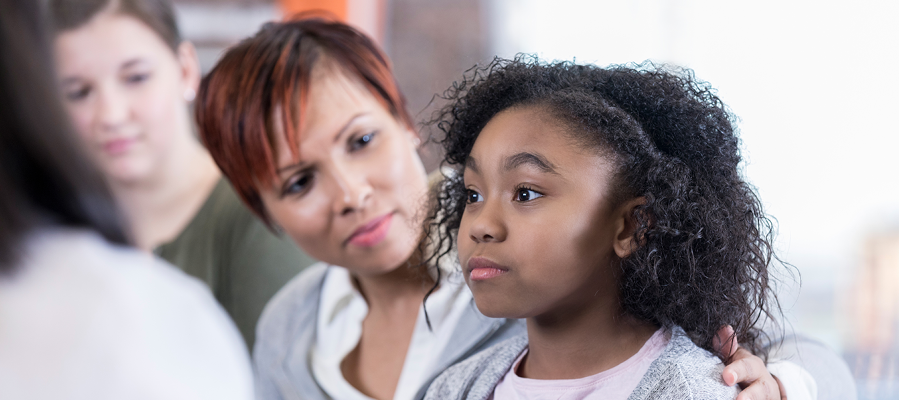Unplugging This Summer
Remember summer? Lazy days, playing outside, going to camp, seeing family…? Most important for kids — not worrying about school, grades, making the team, stress, and more. Schedules and screens bring pressure, anxiety, and potential burnout, but summertime can alleviate that. Let’s talk about not just unplugging from electronics, but also taking a break from the daily grind that’s there for kids so many other months of the year.
MAKE SUMMER A BALANCE
Sure, there’s more time for kids to get lost on Instagram and Tik Tok, but also more opportunities for creative outlets, hanging with friends, getting outside, reading for fun… the list is endless. But it’s an abrupt lifestyle change going from a rigid schedule and responsibilities to hours of free time.
“It’s important to have kids slow down, and they don’t always have to be stimulated by technology and phones,” says Monarch Academy Annapolis’s Rachel Light. “Boredom actually sparks a lot of creativity. They make up new games and want to play with friends. It’s actually really important that kids have a little bit of boredom.”
“Overscheduling can be stressful. School year is always go, go, go. It’s important to have a balance. Keep them busy, but also give them time to relax and hang out.”
TAKE ADVANTAGE OF MORE OPPORTUNITIES
For your little ones, consider a sensory bin, which you can make in minutes with a container at home. Add spoons, nuts, pasta, Legos – whatever is on hand. Young kids love to play with textures.
Summer reading is important, but we understand it can be hard to engage kids with books and reading. Consider a quick trip to the library or Barnes & Noble, and help them find something they’re interested in. Libraries and local parks often offer free programs. Check out Summer@Your Library events in Anne Arundel County, featuring live animals, magic, music, and more. Baltimore County Parks & Rec has a long list of free activities for kids. If you’re in Prince George’s County, the library system offers free Summer Prince George’s programs, plus lots of free classes and events for all ages and “Summer Learning Spark,” which are no-cost programs in the public schools.
Camps might be another option. You can find STEM camps, sports camps, and others for kids with no electronics allowed. A quick search in Maryland will find camps with activities that include cooking, sewing, sailing, arts and crafts, dance, chorus, history, chess, science, natural discovery, and many more. Families can go camping together, and some travel agencies can send you to places with no wi-fi that are off the grid completely. (Look these up – it’s a thing today!)
Consider service projects. Usually designed for older kids, there’s great value in volunteering and joining summer service projects. Check out volunteer opportunities in Maryland with Meals on Wheels, or a variety of opportunities in Montgomery County, or the Teen Volunteer Program at the Maryland Zoo. There are possibilities for kids in affordable housing, feeding the unhoused, church programs, the YMCA and many more. No child is too young to volunteer and programs provide adult leaders and mentors. Maybe best of all – most of these activities are free.
Remember, Student Service Learning (SSL) is a high school graduation requirement in the State of Maryland and many programs offer these credit hours.
How about something completely different for your child? Enroll them in a local cooking class. How about science and discovery? For Harry Potter fans, the Physics of Quidditch. The organization DC Area Moms has a list of programs for preschoolers and younger kids. There are theater programs, fashion design, cake decorating, American Sign Language, therapeutic recreation… the list of possibilities for your child is huge. It’s a chance to try something different – and get them out of their comfort zone.



CHILDHOOD HAS MOVED INDOORS
Today, the average American child spends as few as 30 minutes in unstructured outdoor play each day while spending more than seven hours in front of a screen. That’s a radical change from a few decades ago, when there were no smartphones, Internet, and far fewer channels on TV.
Connecting with friends, keeping in touch, playing games, and spending free time is mostly done online and indoors today. Many kids have never experienced life without a smartphone in their hand and wi-fi connectivity or cell service. And any screen time discourages human connections — so important for anyone — especially kids.
Benefits of volunteering and spending time outdoors — especially in an entirely new environment and comfort zone — are extensive and well-documented, especially for young people, with proven wellness and mental health advantages.
YOU CAN IMPROVE THEIR SUMMER EXPERIENCE
As parents, you not only can ensure kids have something occupying them during summer vacation, and also prevent the dreaded “I’m bored” syndrome when your kids are out of school.
There are physical and mental benefits to different summer activities, like improved blood pressure, aerobic fitness, reduced levels of anxiety and depression, and boosted social skills, empathy, self-esteem, and leadership. And it’s not too late to get your kids involved.
Unplugging for the summer doesn’t just mean an expensive and exclusive summer camp. Hit up your school or a place of worship for ideas. Look at volunteer organizations in the community. There are many sports and civic organizations available. Find out more from your public library of local government. Keep them occupied as well as outside their comfort zone!
And we’ll be ready to see them back at school, happy, rested and healthy, in a few weeks!











